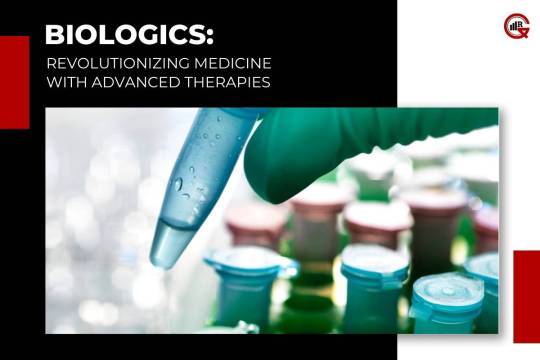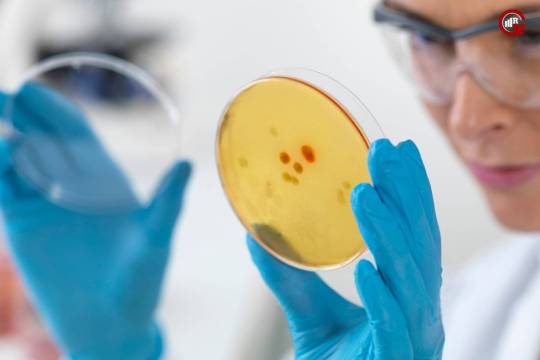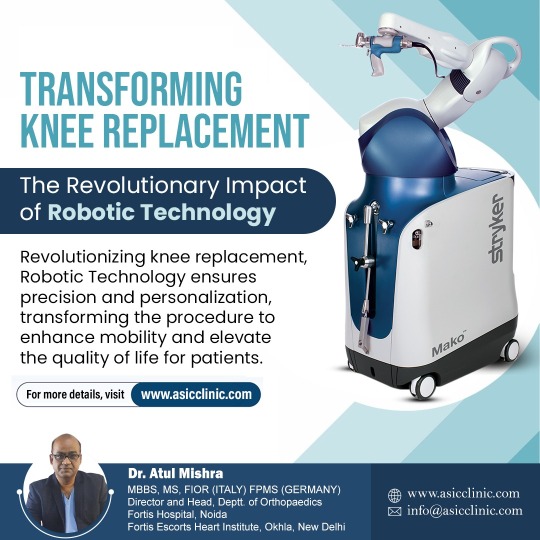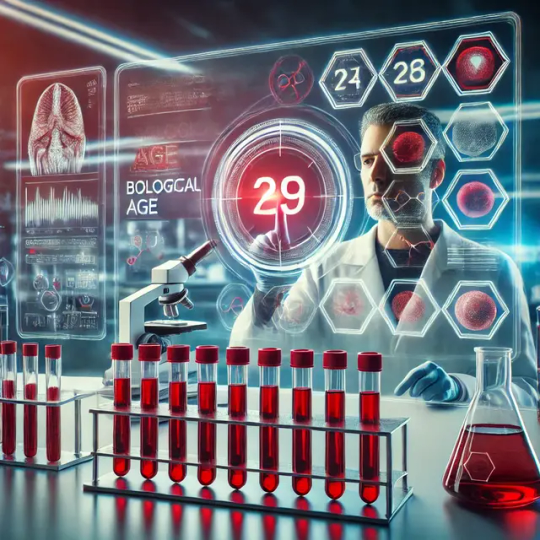#MedicalAdvancement
Explore tagged Tumblr posts
Text

Call for Speakers 10th World Congress on Clinical and Medical Research from March 04–06, 2026 in Dubai, UAE. We invite passionate speakers, researchers, and healthcare professionals to present their insights, innovations, and groundbreaking research at this prestigious international congress. Contribute to advancing the global dialogue in clinical trials, medical research, patient care, and healthcare innovations. Early Bird Deadline: July 31, 2025 Register Now: https://clinical-and-medical-research.utilitarianconferences.com/registration Connect via WhatsApp: https://wa.me/+971551792927 Be a part of the next breakthrough in clinical and medical research
#ClinicalResearch#MedicalResearch#HealthcareInnovation#ClinicalTrials#MedicalScience#HealthResearch#PatientCare#ResearchInnovation#ClinicalStudy#MedicalAdvancement#HealthcareResearch#MedicalBreakthrough#GlobalHealth#ClinicalDevelopment
0 notes
Text
Pharma and life sciences rely on specialized talent to drive innovation, ensure compliance, and bring life-changing treatments to market. Flexible staffing solutions provide the expertise needed to advance healthcare and improve patient outcomes.
#PharmaStaffing#LifeSciences#SpecializedTalent#HealthcareInnovation#ClinicalResearch#RegulatoryCompliance#BiotechCareers#FlexibleWorkforce#MedicalAdvancement#PharmaceuticalIndustry
0 notes
Text
youtube
#BiologicalAge#HealthInnovation#AgingScience#Longevity#PersonalizedHealth#MedicalBreakthrough#AntiAging#Wellness#HealthyAging#BloodTest#MedicalResearch#PreventiveCare#Healthcare#AgeAssessment#SteroidBiomarkers#PrecisionMedicine#LifeSpan#HealthSpan#Genetics#AgeRelatedDiseases#BloodBiomarkers#HealthTechnology#SmartHealthcare#AgingWell#HealthMonitoring#MedicalAdvancement#WellnessTechnology#HealthyLiving#FutureOfMedicine#Biomarkers
0 notes
Text

CALL FOR CME CPD CERTIFICATION "Elevate Your Expertise – Join Our Certified CME/CPD Program." At The CME/CPD Accredited 15th World Healthcare, Hospital Management, Nursing, And Patient Safety Conference From May 14-16, 2025, In San Francisco, USA. Register Now: https://nursing.utilitarianconferences.com/registration Registration Deadline: March 15th, 2025 Contact us: https://wa.me/+447723493307 #Nursing #Healthcare #Patientsafety #Healthcareheroes #CME #CPD #Lifelonglearning #Nurseeducation #Medicaltraining #Professionaldevelopment #Healthcareeducation #Nursesrock #Continuingeducation #Healthprofessionals #Nursingexcellence #Medicaladvancement #Careergrowth
#Nursing#Healthcare#Patientsafety#Healthcareheroes#CME#CPD#Lifelonglearning#Nurseeducation#Medicaltraining#Professionaldevelopment#Healthcareeducation#Nursesrock#Continuingeducation#Healthprofessionals#Nursingexcellence#Medicaladvancement#Careergrowth
0 notes
Text

🔰 *ROC 2025 - 21st Winter Meeting*
🚨 Advances & Techniques in Joint Replacement Surgery & Knee Arthroscopy
📢 Registration are Open Now!!
🗓️ Date: 30th Jan - 1st Feb 2025
📍 Venue: The Westin Powai Lake, Mumbai
🔗 Click Here to Register: https://tinyurl.com/OrthoTV-ROC2025
🔺 *Final Scientific Program Attached*
📚 *HIP DAY*
*Overseas Faculty* :
👨⚕️Dr. Thorsten Gehrke (Germany🇩🇪): "Getting the Primary Right"
👨⚕️Dr. David Mayman (HSS, USA 🇺🇸 ): "Complex Primary THA"
👨⚕️Dr. Amar Ranawat (USA 🇺🇸): "Complications"
👨⚕️Dr. Bill Walter (Australia 🇦🇺): "Revision Hip"
▶️ Media Partner: OrthoTV Global
🔗 Discover more at www.orthotvonline.com
🔗 Join OrthoTV - https://linktr.ee/OrthoTV
#RevisionHip#DrBillWalter#OrthoTVGlobal#HipSurgery#Orthopedics#Australia#HipReplacement#OrthoTV#MedicalInnovation#HipJoint#OrthopedicSurgeon#Healthcare#OrthopedicEducation#MedicalAdvancement#Surgery#OrthoCommunity#HipCare#PatientCare#OrthopedicTreatment#HipRevision
0 notes
Text
Advanced Minimally Invasive Knee Replacement Surgery in Mumbai
Transform your life with Advanced Minimally Invasive Knee Replacement Surgery in Mumbai. Our state-of-the-art facilities and skilled medical team offer personalized care and advanced techniques for a successful outcome. Contact us today to learn more.
For more information : https://boneandjointcare.co.in/minimally-invasive-total-knee-replacement-surgery/
#MinimallyInvasiveSurgery#KneeReplacement#AdvancedTechnology#MumbaiHospital#OrthopedicSurgeon#SurgicalInnovation#PainFreeRecovery#MedicalAdvancement#TopSurgeon#HealthyKnees
0 notes
Text
Biologics: Revolutionizing Medicine With Advanced Therapies

In the realm of modern medicine, biologics have emerged as a groundbreaking class of therapeutic agents, offering new hope and innovative treatment options for a wide range of diseases. From cancer and autoimmune disorders to infectious diseases and genetic disorders, biologics harness the power of biological molecules to target specific pathways in the body, providing tailored therapies with enhanced efficacy and reduced side effects. In this article, we delve into the world of biologics, exploring their origins, mechanisms of action, therapeutic applications, and the transformative impact they have on healthcare.
Understanding Biologics: Origins and Characteristics
Biologics are a class of medicinal products derived from living organisms, including cells, tissues, proteins, and nucleic acids. Unlike traditional small molecule drugs synthesized through chemical processes, biologics are produced using advanced biotechnological methods, such as recombinant DNA technology and cell culture techniques. These complex molecules exhibit a high degree of specificity and potency, targeting specific molecular pathways involved in disease processes.
One of the defining features of biologics is their large molecular size and structural complexity, which enables them to interact with specific receptors or molecules in the body with exquisite precision. This targeted approach allows biologics to modulate immune responses, inhibit tumor growth, replace deficient proteins, or correct genetic abnormalities, making them highly effective therapeutic agents for a diverse array of medical conditions.
Mechanisms of Action and Therapeutic Applications

Biologics exert their therapeutic effects through various mechanisms of action, depending on their specific molecular targets and intended clinical indications. Some common mechanisms of action include:
Targeted Inhibition: Biologics can selectively inhibit specific molecules or pathways involved in disease pathogenesis. For example, monoclonal antibodies bind to cell surface receptors or soluble proteins, blocking their activity and preventing disease progression. This targeted approach is particularly effective in cancer therapy, where monoclonal antibodies can target tumor-specific antigens or growth factors, leading to tumor regression and improved patient outcomes.
Immune Modulation: Biologics can modulate immune responses by targeting key mediators of inflammation or autoimmunity. Biologic agents such as tumor necrosis factor (TNF) inhibitors and interleukin (IL) antagonists suppress pro-inflammatory cytokines, thereby alleviating symptoms of autoimmune diseases such as rheumatoid arthritis, psoriasis, and inflammatory bowel disease.
Cellular Therapy: Some biologics involve the use of living cells or tissues to replace or regenerate damaged tissues or organs. Cellular therapies such as chimeric antigen receptor (CAR) T-cell therapy harness the power of engineered immune cells to target and destroy cancer cells, offering a promising new approach to cancer treatment.
Gene Therapy: Gene therapy utilizes biological agents, such as viral vectors or nucleic acid-based molecules, to introduce therapeutic genes into target cells, correcting genetic abnormalities or promoting desired therapeutic effects. This revolutionary approach holds the potential for treating genetic disorders, inherited diseases, and certain types of cancer by addressing the underlying genetic causes of disease.
The therapeutic applications of biologics span a wide range of medical specialties, including oncology, immunology, hematology, neurology, and infectious diseases. Biologics have revolutionized the treatment landscape for conditions such as cancer, autoimmune diseases, rare genetic disorders, and infectious diseases, offering new avenues for personalized medicine and precision therapeutics.
Challenges and Future Directions

While biologics hold tremendous promise for improving patient outcomes and transforming healthcare, they also present unique challenges and considerations. These include:
Cost and Accessibility: Biologics are often complex and expensive to manufacture, leading to high treatment costs that may limit access for some patients. Efforts to improve affordability and expand access to biological therapies are essential to ensure equitable healthcare delivery.
Immunogenicity and Safety: Biologics can elicit immune responses in some patients, leading to the development of anti-drug antibodies that may reduce efficacy or cause adverse reactions. Strategies to mitigate immunogenicity and enhance the safety profile of biologics are ongoing areas of research and development.
Regulatory Considerations: The regulatory approval process for biologics involves stringent requirements for safety, efficacy, and quality control. Regulatory agencies play a critical role in ensuring the safety and effectiveness of biological therapies through rigorous preclinical and clinical testing.
Looking ahead, the future of biologics holds tremendous promise, with ongoing advancements in biotechnology, genomics, and personalized medicine driving innovation in therapeutic development and delivery. Emerging technologies such as CRISPR gene editing, mRNA vaccines, and cell-based therapies are expanding the possibilities for biological interventions, offering new hope for patients with unmet medical needs.
Emerging Trends and Innovations
In addition to existing biological therapies, several emerging trends and innovations are shaping the future of biological medicine:
Biosimilars: Biosimilars are biologic products that are highly similar to an already approved reference biologic, with no clinically meaningful differences in safety, efficacy, or quality. Biosimilars offer a more affordable alternative to expensive biologic therapies, promoting competition in the market and expanding access to treatment options for patients.
Next-Generation Biologics: Advances in biotechnology are driving the development of next-generation biologics with enhanced properties and functionalities. These include engineered antibodies with improved binding affinity or specificity, novel protein scaffolds for drug delivery, and bi-specific or multi-specific antibodies capable of targeting multiple disease pathways simultaneously.
Personalized Medicine: The era of personalized medicine is revolutionizing biologic therapy, with advances in genomics, biomarker discovery, and patient stratification enabling tailored treatment approaches. By identifying genetic variations, biomarkers, and disease subtypes, personalized medicine allows for more precise matching of patients with the most effective biological therapies, maximizing therapeutic outcomes and minimizing adverse effects.
Drug Delivery Technologies: Innovations in drug delivery technologies are enhancing the efficacy, safety, and convenience of biological therapies. These include novel formulations such as sustained-release formulations, nanoparticle-based delivery systems, and targeted drug delivery approaches that enable site-specific delivery of biologics to diseased tissues while minimizing systemic exposure and off-target effects.
Combination Therapies: Combination therapies involving multiple biological agents or a combination of biological and small molecule drugs are emerging as a promising strategy for tackling complex diseases and overcoming treatment resistance. By targeting multiple disease pathways or mechanisms of action simultaneously, combination therapies offer synergistic effects and improved therapeutic outcomes compared to monotherapy approaches.
Ethical and Social Implications

The widespread adoption of biological therapies raises important ethical and social considerations that must be addressed:
Equitable Access: Ensuring equitable access to biological therapies is essential to address disparities in healthcare delivery and promote health equity. Efforts to reduce treatment costs, improve insurance coverage, and expand access to underserved populations are critical to ensure that all patients can benefit from biologic innovations.
Informed Consent and Patient Autonomy: Patients receiving biologic therapies must be adequately informed about the risks, benefits, and alternatives to treatment to make informed decisions about their healthcare. Respecting patient autonomy and preferences is paramount in the era of personalized medicine, where treatment choices may be more individualized and complex.
Data Privacy and Security: The use of biological therapies often involves the collection, storage, and analysis of sensitive patient data, including genetic information and medical records. Protecting patient privacy and maintaining data security is imperative to safeguard patient confidentiality and prevent unauthorized access or misuse of personal health information.
Healthcare Resource Allocation: Biologic therapies, particularly novel and expensive treatments, may pose challenges for healthcare systems in terms of resource allocation and prioritization. Balancing the costs and benefits of biological therapies against competing healthcare needs requires careful consideration of economic, ethical, and societal factors to ensure optimal allocation of limited resources. In conclusion, biologics represent a paradigm shift in medicine, offering targeted, effective, and personalized therapies for a wide range of diseases.
From monoclonal antibodies and cytokine inhibitors to cellular and gene therapies, biologics are reshaping the treatment landscape and improving patient outcomes worldwide. As we continue to unlock the potential of biologic therapies, it is essential to address challenges related to access, safety, and affordability to ensure that all patients can benefit from these transformative innovations in healthcare.
0 notes
Text


Valencon - 2024 Celebrating successful treatment of 250 patients CyberKnife S7 unit Visit - https://www.valentiscancerhospital.com/
#Valencon2024#MedicalMilestone#CyberKnifeSuccess#HealthcareTriumph#PatientCare#TreatmentSuccess#InnovationInMedicine#MedicalAdvancement#HealthCelebration#CyberKnifeS7#MilestoneAchievement
0 notes
Text

TRANSFORMING KNEE REPLACEMENT The Revolutionary Impact of Robotic Technology Revolutionizing knee replacement, Robotic Technology ensures precision and personalization, transforming the procedure to enhance mobility and elevate the quality of life for patients. Visit: https://www.asicclinic.com/ Call: +91 9871 910 365 Follow us on Facebook: https://www.facebook.com/ASICclinic Twitter: https://twitter.com/asicclinic Instagram: https://www.instagram.com/dratulmishra01/ Linkedin: https://www.linkedin.com/in/dr-atul-mishra-670b47122/
#jointpain#jointreplacement#ASICClinic#DrAtulMishra#RoboticKneeReplacement#PrecisionSurgery#MedicalInnovation#JointHealth#MobilityRevolution#HealthTechAdvancement#PersonalizedCare#QualityOfLife#OrthopedicTechnology#FutureOfSurgery#RevolutionizingHealthcare#RoboticPrecision#InnovativeMedicine#KneeHealth#PatientCare#MedicalBreakthrough#SurgicalInnovation#TechTransformsHealth#EnhancedMobility#Orthopedics#MedicalAdvancement#TransformativeSurgery#HealthcareRevolution#SmartSurgery#DigitalHealth#RoboticsInMedicine
0 notes
Text
#KneeReplacement#AdvancedSurgery#DrAmitNathMisra#OrthopedicSurgeon#Noida#JointReplacement#KneeSurgery#OrthopedicCare#MedicalAdvancement#PrecisionSurgery#OrthopedicExpert#HealthcareInnovation
0 notes
Text
Fidaa Wishah MD
Dr. Fidaa Wishah stands as a dedicated Pediatric Radiologist, bringing a wealth of expertise to the realm of child healthcare. With a passion for pediatric imaging, Dr. Wishah has become a cornerstone in ensuring accurate diagnoses and effective treatment plans for young patients.
In her distinguished career, Dr. Fidaa Wishah has demonstrated an unwavering commitment to the well-being of children, employing advanced imaging techniques to unravel medical mysteries and provide precise insights into pediatric conditions. Her empathetic approach, coupled with extensive medical knowledge, has made her a trusted figure in the field.
As a Pediatric Radiologist, Dr. Wishah employs state-of-the-art technology to perform and interpret medical imaging exams specifically tailored for children. Her specialized focus on pediatric radiology allows for a deeper understanding of developmental nuances, ensuring accurate and nuanced diagnoses. From X-rays to ultrasounds, Dr. Fidaa Wishah is adept at utilizing various imaging modalities to cater to the unique needs of her young patients.
Beyond technical proficiency, Dr. Wishah's warm and compassionate demeanor creates a supportive environment for both children and their families. Recognizing the anxiety that medical procedures can evoke, she takes the time to explain each step, fostering a sense of trust and comfort among her patients.
In addition to her clinical endeavors, Dr. Fidaa Wishah is actively involved in medical research and education, contributing to the advancement of pediatric radiology. Her commitment extends beyond the examination room, making a positive impact on the broader field of pediatric healthcare.
In conclusion, Dr. Fidaa Wishah emerges not just as a Pediatric Radiologist, but as a nurturing force dedicated to the health and happiness of every child under her care. Her expertise, combined with a genuine passion for pediatric radiology, marks her as a beacon of hope for families navigating the complexities of childhood health challenges.
Visit us on : https://drfidaawishah.com Address: 2000 Mowry Ave, Fremont, CA 94538.
#PediatricRadiologist#ChildHealthcare#DrFidaaWishahMD#MedicalImaging#PediatricHealth#RadiologyExpertise#ChildWellBeing#HealthcareCompassion#DiagnosticPrecision#MedicalAdvancement
0 notes
Text

Anarcha, Lucy, Betsey: The Mothers of Gynecology
Anarcha, Lucy, and Betsey were enslaved women from plantations in and around Montgomery, Alabama. With neither consent nor anesthesia, they were experimented upon by Dr. J. Marion Sims in the 1840s. After publishing the results of his “success,” Sims moved to New York to seek fame and fortune.
Within a decade, he became known as the Father of Gynecology.
By contrast, Anarcha, Lucy, and Betsey fell into history. They changed the world, only to beforgotten by it.
All three women developed a painful medical condition after childbirth that caused them to lose control of their bladders and bowels. Enslaved women with this condition were kept apart from other workers. There was no cure. Anarcha, Betsey, and Lucy were told they would have to live with the pain and shame of their injuries for the rest of their lives.
The men who enslaved Anarcha, Betsey, and Lucy were frustrated with their condition. They wanted to find a cure, not because they cared deeply about the enslaved women, but because the women could no longer do the hard labor that would earn money for their enslavers. In 1844, all three enslavers sought the advice of doctor J. Marion Sims.
Like many doctors in the 1800s, J. Marion Sims was very interested in medical advancement and experimentation. He practiced all kinds of medicine, from dentistry to pediatrics to general surgery. In 1835, he moved from South Carolina to Alabama after two of his patients died. Eventually, he settled in Montgomery County, where he came to the attention of the men who enslaved Anarcha, Betsey, and Lucy.
Sims had recently discovered a new way to position surgical patients. He believed he might be able to cure Anarcha, Betsey, and Lucy within six months. He made arrangements with their enslavers to lease the women for the duration of their treatment, so he had complete control over their bodies. It is unlikely that Anarcha, Betsey, or Lucy ever had the opportunity to consent to the experimentation they were about to endure.
Lucy was the first of the three women to undergo Sims’s experimental operation. The operating room was packed with doctors who wanted to watch the procedure. She was not asked whether she was comfortable with strange men watching her operation. Lucy was brought to the operating room naked and restrained on the table so her involuntary movements during surgery would not disrupt the procedure. Sims did not use anesthesia to numb her pain. This was partly because doctors feared patients could die from anesthesia and partly because it was commonly believed that black women did not experience pain the same way white women did. Lucy’s surgery took about an hour, and she was conscious for every minute of it.
After the surgery, Lucy developed a terrible infection from a device Sims had placed in her bladder. She experienced days of extreme agony. Sims was able to cure her infection, but her injury did not heal. The operation was a failure.
Betsey was the next person to undergo Sims’s operation. Like Lucy, Betsy was naked on the operating table and not given any anesthesia. This time, Sims used a device he invented for her bladder, and Betsey did not experience the same post-surgical infection that Lucy suffered. But Betsey’s injury was not repaired and this operation was also considered a failure. Anarcha was operated on last, with the same results.
When the results of Anarcha’s surgery became widely known, the local medical community decided that Sims was a failure and stopped supporting his experiments. Anarcha, Betsy, and Lucy were left in Sims’s control, because without a cure, they were considered useless to their enslavers. They worked for the Sims family in the periods between their procedures and recovery.
Sims decided to carry on with his experiments even though all of his white male assistants quit. He trained Anarcha, Betsey, and Lucy to be his assistants during operations and taught them how to care for each other during their recoveries. Separated from their families and communities, with medical conditions that made them social outcasts, the women had no choice but to continue cooperating with Sims. In time, they became skilled medical practitioners in their own right.
Sims experimented on Anarcha, Betsey, and Lucy for the next five years. He also brought in other enslaved women to experiment on. He had no shortage of patients because enslaved women did not receive proper care during pregnancy. Sims bought one patient because her case was unique, and her enslaver was not willing to risk his investment on an experimental surgery. Sims practiced his procedure on a total of 12 women, but only Anarcha, Betsey, and Lucy were named in his published reports.
In the summer of 1849, Sims performed Anarcha’s 30th operation. He used all of the new tools and techniques he had developed over the last four years. This time, Anarcha’s injury finally healed and she made a full recovery. Shortly after perfecting his technique, Sims closed his hospital and moved north. Anarcha, Betsey, and Lucy all returned to their enslavers after five years of absence and experimentation.
In 1852, Sims published an article that outlined his new procedure. To appeal to a wider audience, he never mentioned that the women he operated on were enslaved or that he had total control over their bodies. He also never mentioned that the enslaved women became skilled medical practitioners. In the illustrations that accompanied his article, he is shown operating on white women with the help of a white nurse. The patient is also covered, a token of respect that Anarcha, Betsey, and Lucy never received.
Sims’s work and article revolutionized surgical treatments for women and earned him the nickname “the father of modern gynecology.” But it must be acknowledged that these advancements were made through the exploitation of enslaved women’s bodies. Some historians have argued that Sims’s patients became enthusiastic participants in his experiments, but it is important to remember that they had no choice. Anarcha, Betsey, Lucy, and all of the unnamed patients of J. Marion Sims deserve to be remembered as the mothers of modern gynecology, because without their labor and pain, Sims’s critical achievement would not have been possible.
•••
Anarcha, Lucy, Betsey: Las Madres de la Ginecología
Anarcha, Lucy y Betsey eran mujeres esclavizadas procedentes de plantaciones de Montgomery (Alabama) y sus alrededores. Sin consentimiento ni anestesia, el Dr. J. Marion Sims experimentó con ellas en la década de 1840. Tras publicar los resultados de su «éxito», Sims se trasladó a Nueva York en busca de fama y fortuna.
En una década, se le conoció como el Padre de la Ginecología.
En cambio, Anarcha, Lucy y Betsey pasaron a la historia. Cambiaron el mundo, sólo para ser olvidadas por él.
Las tres mujeres desarrollaron una dolorosa enfermedad después de dar a luz. Les hizo perder el control de la vejiga y los intestinos. A las mujeres esclavizadas con esta enfermedad se las mantenía separadas de los demás trabajadores. No había cura. A Anarcha, Betsey y Lucy les dijeron que tendrían que vivir con el dolor y la vergüenza de sus lesiones el resto de sus vidas.
Los hombres que esclavizaron a Anarcha, Betsey y Lucy se sentían frustrados por su situación. Querían encontrar una cura, no porque se preocuparan profundamente por las mujeres esclavizadas, sino porque las mujeres ya no podían hacer el trabajo duro que ganaría dinero para sus esclavizadores. En 1844, los tres esclavistas buscaron el consejo del doctor J. Marion Sims.
Como muchos médicos del siglo XIX, J. Marion Sims estaba muy interesado en los avances y experimentos médicos. Practicó todo tipo de medicina, desde odontología hasta pediatría y cirugía general. En 1835, se trasladó de Carolina del Sur a Alabama tras la muerte de dos de sus pacientes. Finalmente, se estableció en el condado de Montgomery, donde llamó la atención de los hombres que esclavizaron a Anarcha, Betsey y Lucy.
Sims había descubierto recientemente una nueva forma de colocar a los pacientes quirúrgicos. Creía que podría curar a Anarcha, Betsey y Lucy en seis meses. Llegó a un acuerdo con sus esclavizadores para arrendar a las mujeres mientras durara su tratamiento, de modo que tenía un control total sobre sus cuerpos. Es poco probable que Anarcha, Betsey o Lucy tuvieran la oportunidad de dar su consentimiento a los experimentos que estaban a punto de sufrir.
Lucy fue la primera de las tres mujeres en someterse a la operación experimental de Sims. El quirófano estaba abarrotado de médicos que querían ver la intervención. No le preguntaron si se sentía cómoda con hombres extraños observando su operación. A Lucy la llevaron desnuda al quirófano y la sujetaron en la mesa para que sus movimientos involuntarios durante la operación no interrumpieran el procedimiento. Sims no utilizó anestesia para calmar el dolor. Esto se debía en parte a que los médicos temían que los pacientes murieran a causa de la anestesia y en parte a que se creía que las mujeres negras no experimentaban el dolor del mismo modo que las mujeres blancas. La operación de Lucy duró aproximadamente una hora, y estuvo consciente durante cada minuto.
Tras la operación, Lucy desarrolló una terrible infección a causa de un dispositivo que Sims le había colocado en la vejiga. Pasó días de extrema agonía. Sims consiguió curar la infección, pero la herida no sanó. La operación fue un fracaso.
Betsey fue la siguiente en someterse a la operación de Sims. Al igual que Lucy, Betsey estaba desnuda en la mesa de operaciones y no recibió anestesia. En esta ocasión, Sims utilizó un dispositivo inventado por él para su vejiga y Betsey no sufrió la misma infección postoperatoria que Lucy. Pero la lesión de Betsey no se reparó y esta operación también se consideró un fracaso. Anarcha fue operada por último, con los mismos resultados.
Cuando se dieron a conocer los resultados de la operación de Anarcha, la comunidad médica local decidió que Sims era un fracaso y dejaron de apoyar sus experimentos. Anarcha, Betsey y Lucy quedaron bajo el control de Sims, ya que sin una cura se consideraban inútiles para sus esclavizadores. Trabajaron para la familia Sims en los periodos entre sus intervenciones y recuperaciones.
Sims decidió continuar con sus experimentos a pesar de que todos sus ayudantes varones blancos renunciaron. Entrenó a Anarcha, Betsey y Lucy para que fueran sus ayudantes durante las operaciones y les enseñó a cuidarse mutuamente durante sus recuperaciones. Separadas de sus familias y comunidades, con problemas médicos que las convertían en marginadas sociales, las mujeres no tuvieron más remedio que seguir cooperando con Sims. Con el tiempo, se convirtieron en expertas médicas por derecho propio.
Sims experimentó con Anarcha, Betsey y Lucy durante los siguientes cinco años. También trajo a otras mujeres esclavizadas para experimentar con ellas. No le faltaban pacientes porque las mujeres esclavizadas nunca recibían los cuidados adecuados durante el embarazo. Sims compró a una paciente porque su caso era único y su esclavizador no estaba dispuesto a arriesgar su inversión en una cirugía experimental. Sims practicó sus procedimientos en un total de 12 mujeres, pero sólo Anarcha, Betsey y Lucy fueron nombradas en sus informes publicados.
En el verano de 1849, Sims realizó la trigésima operación de Anarcha. Utilizó todas las nuevas herramientas y técnicas que había desarrollado en los últimos cuatro años. Esta vez, la lesión de Anarcha sanó por fin y se recuperó por completo. Poco después de perfeccionar su técnica, Sims cerró su hospital y se trasladó al norte. Anarcha, Betsey y Lucy regresaron a sus esclavizadores tras cinco años de ausencia y experimentación.
En 1852, Sims publicó un artículo en el que describía su nuevo procedimiento. Para atraer a un público más amplio, nunca mencionó que las mujeres a las que operaba eran esclavas ni que tenía un control total sobre sus cuerpos. Tampoco mencionó que las mujeres esclavizadas se convertieron en expertas médicas. En las ilustraciones que acompañan a su artículo, aparece operando a mujeres blancas con la ayuda de una enfermera blanca. La paciente también está cubierta, una muestra de respeto que Anarcha, Betsy y Lucy nunca recibieron.
El trabajo y el artículo de Sims revolucionaron los tratamientos quirúrgicos para las mujeres y eso le ganó el apodo de «padre de la ginecología moderna». Pero hay que reconocer que estos avances se lograron mediante la explotación de los cuerpos de mujeres esclavizadas. Algunos historiadores han argumentado que las pacientes de Sims se convirtieron en entusiastas participantes en sus experimentos, pero es importante recordar que no tenían elección. Anarcha, Betsey, Lucy y todas las pacientes anónimas de J. Marion Sims merecen ser recordadas como las madres de la ginecología moderna, porque sin su trabajo y su dolor, el logro crítico de Sims no habría sido posible.
#blacklivesmatter#blackhistory#history#blacklivesalwaysmatter#blackhistorymonth#blackpeoplematter#knowyourhistory#blackwomenmatter#protect black women#gynecology#medical apartheid#medical segregation#medicine#medicina#ginecología#lasvidasnegrasimportan#know your history#black history is everybody's history#historyfacts#facts#black history is world history#black history is american history#medicaladvancements#black queens#black history month#black history#historia#culture#blackhistoryyear#power to the people
15 notes
·
View notes
Text

Revolutionary Blood Test for Biological Age
A groundbreaking new system has been developed to estimate biological age, offering a more accurate measure of aging beyond chronological years. Using just five drops of blood, the method analyzes 22 key steroids and their interactions to assess overall health. This innovative approach enables early detection of age-related health risks and allows for personalized health interventions. By providing deeper insights into how the body ages, this advancement has the potential to revolutionize preventive healthcare and longevity research. The study marks a significant step toward precision medicine, helping individuals take proactive steps to improve their healthspan.
Visit : bookofaward.com
#BiologicalAge#HealthInnovation#AgingScience#Longevity#PersonalizedHealth#MedicalBreakthrough#AntiAging#Wellness#HealthyAging#BloodTest#MedicalResearch#PreventiveCare#Healthcare#AgeAssessment#SteroidBiomarkers#PrecisionMedicine#LifeSpan#HealthSpan#Genetics#AgeRelatedDiseases#BloodBiomarkers#HealthTechnology#SmartHealthcare#AgingWell#HealthMonitoring#MedicalAdvancement#WellnessTechnology#HealthyLiving#FutureOfMedicine#Biomarkers
0 notes
Text

CALL FOR CME CPD CERTIFICATION "Elevate Your Expertise – Join Our Certified CME/CPD Program." At The CME/CPD Accredited 15th World Healthcare, Hospital Management, Nursing, And Patient Safety Conference From May 14-16, 2025, In San Francisco, USA. Register Your Group Now: https://nursing.utilitarianconferences.com/registration Registration Deadline: February 28, 2025 Contact us: https://wa.me/+447723493307 #Nursing #Healthcare #Patientsafety #Healthcareheroes #CME #CPD #Lifelonglearning #Nurseeducation #Medicaltraining #Professionaldevelopment #Healthcareeducation #Nursesrock #Continuingeducation #Healthprofessionals #Nursingexcellence #Medicaladvancement #Careergrowth
#Nursing#Healthcare#Patientsafety#Healthcareheroes#CME#CPD#Lifelonglearning#Nurseeducation#Medicaltraining#Professionaldevelopment#Healthcareeducation#Nursesrock#Continuingeducation#Healthprofessionals#Nursingexcellence#Medicaladvancement#Careergrowth
0 notes
Text

Dear Friends and Esteemed Seniors 🌟 We are Proud to Launch OrthoAI 2.0 today
Click here to use it : https://www.orthoai.in
Free access for a Limited Period
🌐The World's First AI dedicated to Orthopaedics gets a Complete Overhaul
🖖🏻Optimised to be your SURGICAL COPILOT ❓Ask it queries about your patients, surgical approaches, dealing with complications and receive practical and evidence-based answers
A New Webportal
Enhanced Navigation
Better Pubmed & article review
integration of EBM Search
Updated Knowledge Database
Efficient Closest Match Answers
📲 Additionally, we invite you to join our WhatsApp group for more insights on AI's integration in Orthopaedic Surgery: https://chat.whatsapp.com/HD5kSmixjE3FQeKeufyve4
🌐 OrthoAI is a groundbreaking Evidence-Based Generative Artificial Intelligence platform. It features Cognitive Search capabilities, providing answers to Orthopaedic questions with recent PubMed citations and informative video links. Warm regards,
🔅Team OrthoAI Parag Sancheti Neeraj Bijlani Ashok Shyam
#OrthoAI#AIinOrthopedics#SurgicalCopilot#OrthopedicInnovation#MedicalAI#OrthopedicSurgery#EvidenceBasedMedicine#AIHealthcare#OrthoTechnology#OrthopedicCommunity#JoinOrthoAI#HealthcareAI#MedicalAdvancement#OrthoAIV2#OrthopedicResearch
1 note
·
View note
Text
youtube
Why MRI-Guided Neurosurgical Ablation Is the Future of Brain Surgery Download Sample Report Copy From Here: https://www.acumenresearchandconsulti... The Global MRI-Guided Neurosurgical Ablation Market is projected to reach USD 1,166.7 million by 2032, growing at a CAGR of 7.2% from 2024 to 2032. In 2023, North America held a significant market value of approximately USD 220.1 million, driven by advanced healthcare infrastructure and high adoption rates. The Asia-Pacific region is expected to witness a faster growth rate, with a CAGR exceeding 7.9% during the forecast period, supported by increasing healthcare investments and technological advancements.
#MRIguidedAblation#neurosurgery_made_easy#brainsurgerysurvivor#medicaltechnology#NeurosurgicalAblation#healthcareinnovation#minimallyinvasivesurgery#medicaladvancements#mri#neurologicaldisorders#MRITechnology#surgicalinnovation#healthcaretrends#globalhealthcare#AblationMarket#medicaldevices#futureofhealthcare#brainhealth#MRIApplications#surgicaltechnology#HospitalTrends#marketresearchreport#marketresearch#acumenresearchandconsulting#marketresearchcompany#news#Youtube
1 note
·
View note